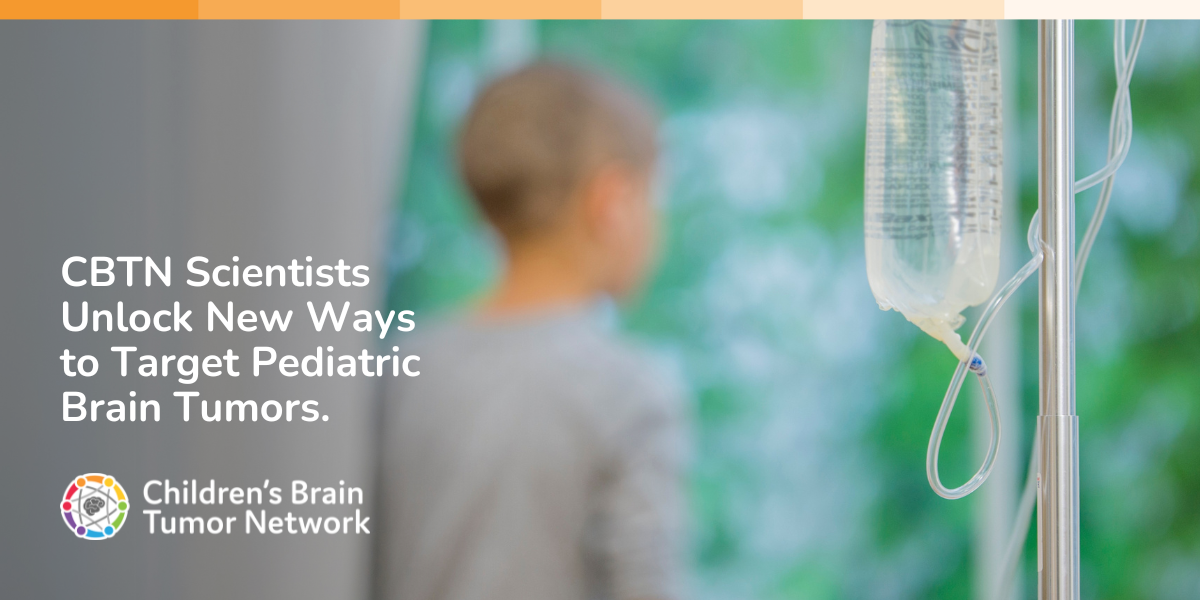CBTN Scientists’ Discovery Brings New Hope to Children with Brain Tumors
Posted on

Treating childhood brain tumors—especially aggressive ones like high-grade gliomas (HGG)—has long been a major challenge. But scientists from the Children’s Brain Tumor Network (CBTN) are bringing new hope through innovative research and a fresh approach to understanding these diseases.
Looking at Tumors in a New Way
Dr. Ammar Naqvi, a lead bioinformatics scientist at CBTN, is exploring “splicing variants,” which could open new doors in treating HGG. Imagine our genes as instruction manuals that tell our bodies how to work. Normally, scientists study the full set of instructions all at once. But Dr. Naqvi’s team is taking a closer look at how different pieces of those instructions can be rearranged—through a process called splicing—to create slightly different versions of the same gene. By studying these small variations, they’re uncovering details that were missed before, including new clues for potential treatments.

“Instead of looking at a gene’s activity as one overall signal, we zoomed in to examine the smaller pieces that make up the gene—called exons. This detailed view helped us find unique versions of the gene that are only found in tumors, which could lead to the identification of tumor-specific protein isoforms and new treatment targets." -Ammar Naqvi, PhD, Principal Bioinformatics Scientist
A Breakthrough Discovery
This deeper look paid off. The team discovered a special version of a gene called NrCAM that appears to be at high levels in high-grade brain tumors, while absent in healthy cells.
This version of NrCAM helps tumors grow and spread—but also presents a potential target for immunotherapy, a treatment approach that helps the immune system attack cancer without harming healthy cells.
"What makes this target so exciting? It meets all the key criteria: it's found in large enough amounts to be treated, it's located on the tumor's cell surface so that it can be reached, and—most importantly—it's unique to the cancer tumor, which helps protect healthy tissue."
This discovery was made possible in large part due to the robust data available through CBTN. CBTN collects a wide assortment of data types from individual patients, including genetic data, medical images, clinical notes, and protein information. This comprehensive picture of a patient enables scientists to see the full picture and ask smarter, more focused questions.
Exploring New Methodologies
In addition to identifying the NrCAM variant, the team also made another exciting discovery: tiny gene segments called therapeutic microexons. These small pieces had never been considered for cancer treatment before, but now show promise as potential new targets for immunotherapy in high-grade glioma (HGG).
To build on this insight, Dr. Naqvi and his team developed a new system to uncover more of these unique immunotherapy targets—not just for HGG, but potentially for other cancers and diseases linked to abnormal gene splicing. He plans to expand this work by incorporating additional CBTN data modalities and ultimately creating a resource to help researchers prioritize splicing variants that could be targeted in a range of disease contexts.
While these findings open up promising new avenues, more rigorous preclinical testing and clinical studies are needed to determine if these splicing-based immunotherapy strategies can be safely and effectively translated into patient care.
A Future of Childhood Brain Tumor Treatment
Dr. Naqvi’s path to this work began with a fascination for science and a strong desire to help others. Now, after nearly a decade at Children’s Hospital of Philadelphia, he’s focused on finding better treatments for some of the most vulnerable patients—children with brain cancer.
"Pediatric high-grade gliomas are deadly due to limited therapeutic options and surgical challenges with abysmal survival rates after initial diagnosis," Dr. Naqvi explains, underscoring the urgent need for new therapeutic targets. "
This latest discovery from CBTN scientists marks a significant stride in the challenge posed by childhood brain tumors. And, thanks to this innovative work, there is new momentum in developing cures. A widening group of researchers is uncovering smarter, more precise ways to treat these diseases—and helping build a future filled with more options, more discoveries, and most importantly, more hope.
Andrei Thomas-Tikhonenko was the corresponding author of the study, published in Cell Reports. Read it here: NRCAM variant defined by microexon skipping is a targetable cell surface proteoform in high-grade gliomas